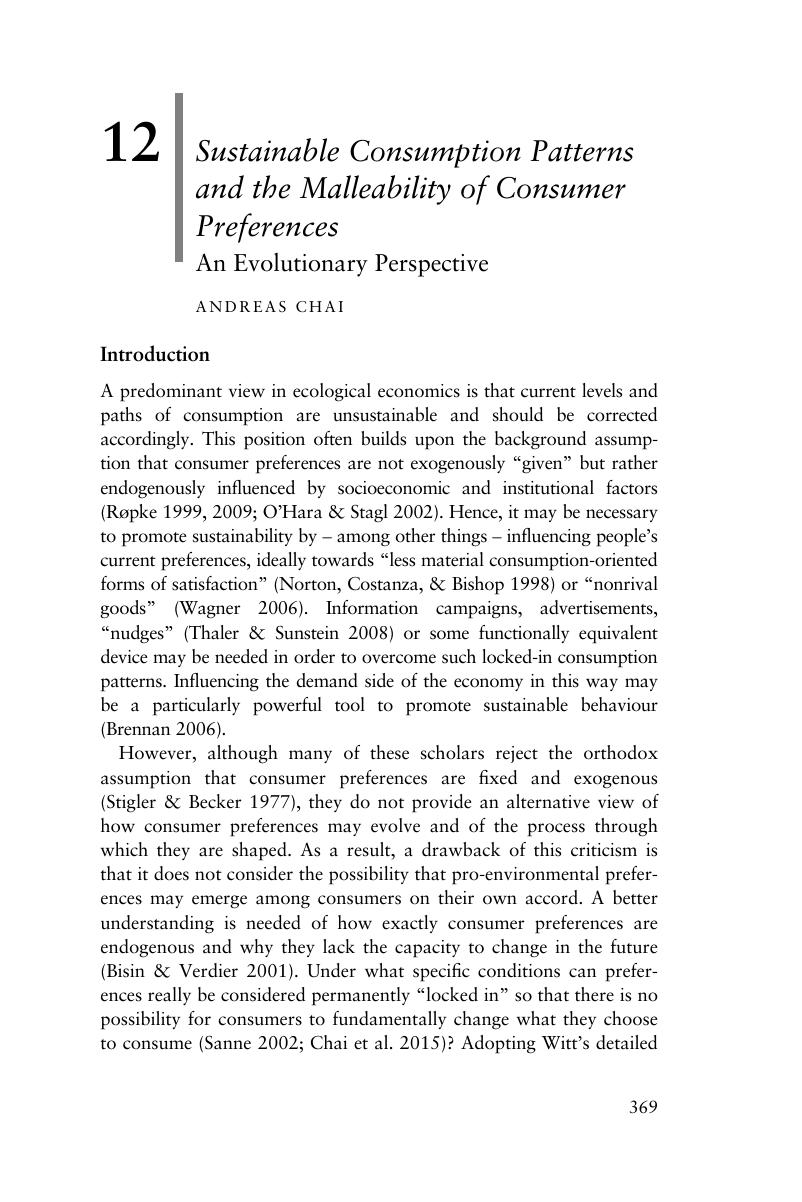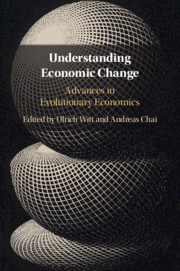Book contents
- Understanding Economic Change
- Understanding Economic Change
- Copyright page
- Contents
- Figures
- Tables
- Contributors
- Part I Introduction
- Part II Conceptual and Methodological Problems
- Part III Perspectives on Evolutionary Macroeconomics
- Part IV Advances in Explaining and Assessing Institutional Evolution
- Part V Evolutionary Perspectives on Welfare and Sustainability
- 11 As Innovations Drive Economic Change, Do They Also Improve Our Welfare?
- 12 Sustainable Consumption Patterns and the Malleability of Consumer Preferences
- Index
- References
12 - Sustainable Consumption Patterns and the Malleability of Consumer Preferences
An Evolutionary Perspective
from Part V - Evolutionary Perspectives on Welfare and Sustainability
Published online by Cambridge University Press: 10 November 2018
- Understanding Economic Change
- Understanding Economic Change
- Copyright page
- Contents
- Figures
- Tables
- Contributors
- Part I Introduction
- Part II Conceptual and Methodological Problems
- Part III Perspectives on Evolutionary Macroeconomics
- Part IV Advances in Explaining and Assessing Institutional Evolution
- Part V Evolutionary Perspectives on Welfare and Sustainability
- 11 As Innovations Drive Economic Change, Do They Also Improve Our Welfare?
- 12 Sustainable Consumption Patterns and the Malleability of Consumer Preferences
- Index
- References
Summary

- Type
- Chapter
- Information
- Understanding Economic ChangeAdvances in Evolutionary Economics, pp. 369 - 392Publisher: Cambridge University PressPrint publication year: 2018



